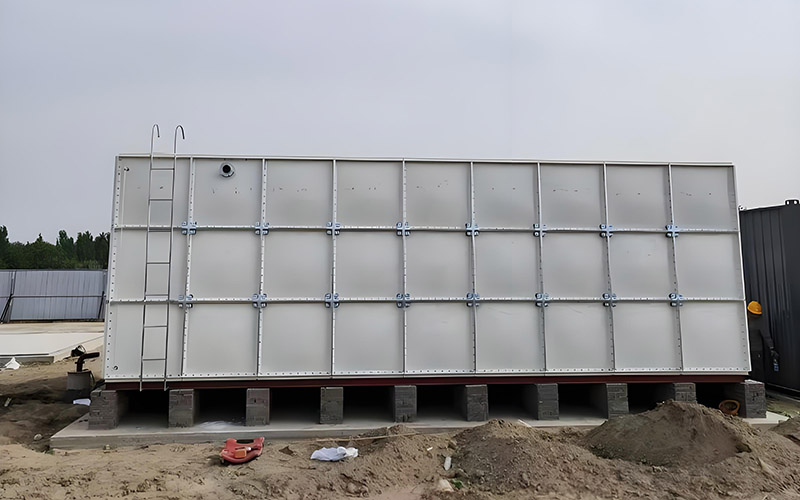When choosing a storage solution for water, chemicals, or industrial liquids, the debate often comes down to two main options: FRP (Fiber Reinforced Plastic) tanks or concrete tanks. As a leading FRP storage tank manufacturer, we are frequently asked which is the better choice. The answer depends on various factors like durability, maintenance, installation, cost, and application.
In this blog post, we’ll compare FRP tanks vs. concrete tanks to help you make an informed decision for your storage needs.
FRP Tanks: Made from fiberglass and resin composites, FRP storage tanks are highly resistant to corrosion, chemical attack, and environmental factors. They are ideal for storing aggressive chemicals, saltwater, and wastewater, where metal or concrete would degrade over time.
Concrete Tanks: Concrete tanks are structurally strong but porous. They can degrade when exposed to chemicals, salts, or harsh environments. Cracking, spalling, and chemical erosion are common issues, especially if protective coatings fail.
Verdict: For corrosive environments, FRP tanks offer superior durability and longevity.

FRP Tanks: Lightweight and prefabricated, FRP tanks are easy to transport and install. They require minimal on-site assembly, reducing installation time and labor costs.
Concrete Tanks: Concrete tanks are heavy and require extensive groundwork, heavy lifting equipment, and longer installation periods. Custom-built concrete tanks can take weeks to construct.
Verdict: FRP tanks are faster and more cost-effective to install, especially in remote locations.
FRP Tanks: Thanks to their corrosion resistance, FRP tanks demand minimal maintenance. Periodic inspections and cleaning ensure long-term performance.
Concrete Tanks: Concrete tanks require frequent monitoring for cracks, leaks, and surface erosion. Maintenance involves sealing, re-coating, and structural repairs.
Verdict: FRP tanks lead in low-maintenance, hassle-free ownership.
FRP Tanks: With correct installation and basic care, FRP tanks offer a lifespan of 30 to 50+ years. They maintain structural integrity even in harsh chemical environments.
Concrete Tanks: Concrete tanks have a comparable lifespan but require consistent maintenance to avoid premature failure.
Verdict: FRP tanks provide a longer-lasting, low-maintenance solution in aggressive conditions.
FRP Tanks: Though the upfront cost of FRP tanks may be higher, the savings in installation, maintenance, and longevity result in a lower total cost of ownership.
Concrete Tanks: Concrete tanks may appear cost-effective initially, but ongoing maintenance and repair costs can accumulate quickly.
Verdict: FRP tanks deliver superior long-term value.
FRP Tanks: Ideal for chemical plants, wastewater treatment, desalination plants, agricultural irrigation, and industries requiring corrosion-resistant storage solutions.
Concrete Tanks: Suitable for large-scale, stationary storage where weight isn’t a concern, and chemical exposure is minimal.
When comparing FRP tanks vs. concrete tanks, FRP is the superior option for most industrial and commercial applications. Its corrosion resistance, lightweight design, ease of installation, and minimal maintenance make it a smart long-term investment.
Looking for a trusted FRP tank supplier? Contact us today to get expert advice, product recommendations, and a free quote tailored to your project needs.